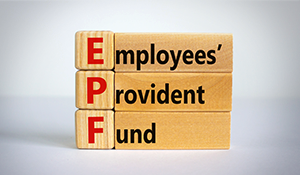Warren Buffet, one of the most admired investors of all time, said, "Do not save what is left after spending, but spend what is left after saving." In this post, we discuss some of the salient features of Employees' Provident Fund (EPF), one of the most popular saving schemes introduced by the government many moons ago.
We invited P. Senthil Kumar, Regional PF Commissioner at EPFO Bengaluru (CENTRAL) Regional Office, to answer EPF-related questions posed by the HR community. During the session (Parichay‒Ask the Expert), he touched upon many critical aspects employers and employees would like to learn more about.
Did you miss the live session? We encourage you to go over the edited excerpts below. If you expect more detailed answers, listen to the recording of the entire webinar here.
As per the new rule, interest earned on PF contributions can be taxed. What are the key aspects of this rule change?
This rule change is related to an employee's personal voluntary contribution above
INR 2.5 lakh in a financial year. So, if a person has contributed INR 3 lakhs, the interest earned on the excess amount of INR 50,000 will be taxable.
What should I keep in mind for EPF withdrawal?
EPF offers a high-interest rate when compared to similar low-risk instruments. The contribution and interest earnings are exempted from tax. But any EPF withdrawal made within five years is taxable. Therefore, a member should think twice before making a withdrawal.
What are the main features of the Employees' Deposit Linked Insurance (EDLI) scheme?
Since the launch of the EDLI scheme in 1976, all EPF members became EDLI members by default.
In this scheme, the contribution (premium) is made only by the employer. In the event of death, the employee's nominee is eligible for a maximum amount of INR 7 lakh. But the eligibility is based on certain criteria, and the calculation is done as per a formula.
Can the employer collect the soft copy of Form 2 and Form 11?
EPFO has a provision for e-nomination using Form 2. If a member has filed the e-nomination with an e-sign (Aadhar-based OTP), then a printout is sufficient. An additional soft copy is not required.
When it comes to Form 11, a member's signed declaration is essential. A printout of this document is valid. Even a digitally signed document is acceptable but not scanned files of physically signed documents.
If an employee wants to link the Aadhar and UAN, can the employer do it from the employer's portal?
Name, gender and DOB are the only basic details required for linking UAN and Aadhar. If these details match perfectly, the employee has to initiate a KYC request for the employer
to log in and verify the same.
In case there is a mismatch of basic details in UAN and Aadhar, is it possible to submit the joint declaration to a PF office in a different city?
Although UAN is portable, the employees' PF accounts are maintained by the respective PF offices. So, any office will accept the joint declaration but they will forward the same to the respective PF office for taking further action.
Once your data is entered and approved by the employer, in the portal, it becomes permanent data. Once this data becomes permanent, then any change can only be done by the concerned EPF office.
P. Senthil Kumar, Regional PF Commissioner at EPFO Bengaluru (CENTRAL) Regional Office
A company with less than 20 employees is willing to enroll voluntarily in EPF. Will the contribution be 10% or 12% in this case?
It can be 10% or 12%. But an agreement between the employer and a majority of the employees has to be submitted for EPF registration. Whenever the headcount reaches 20,
12% becomes mandatory.
Is there a charge for filing an EPF Nil Return?
Yes. An employer has to pay a minimum administrative charge of INR 75 for EPF Nil Return filing (in A/C No. 2) on the portal. This happens when an establishment does not have any employees contributing to PF. The fee details can be found on the EPFO portal.
Watch the recording of the entire webinar









